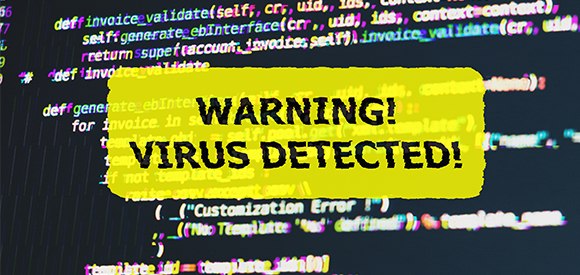People tend to use the term ‘virus’ and ‘malware’ to talk about dangerous programs or software which harm users’ computers. But there is no difference between malware and virus. A virus is the oldest type of malware. It can replicate and spread by gluing itself to common files or programs. Some traditional ways to get a virus are emails, websites, flash drives.
Meanwhile, malware is a broader term which describes all types of malicious code. Ransomware, adware, spyware – it’s just a short list of those threats. The term ‘malware’ appeared to define hard-to-detect threats from signature-identifiable viruses. Each kind of malware has its peculiarities and ways to spread. Some of them are very hard to detect without best malware removal.
Malware Types

The first cybercriminals appeared long before we started to browse the net. And with technology development, they have only become smarter. Hackers learned new ways to infect our computers. Cybercriminals fulfill their goals and they don’t bother about malware vs virus questions. Let us briefly describe the most widespread kinds of malicious software.
Viruses. As we have already mentioned, a computer virus is a code which copies itself and infects other files. To activate a virus, a user needs to perform a particular action (open an attachment, click on a link, etc.)
Worms. Another type of malware that can replicate itself. However, it does not require users’ actions for that. Everything a worm needs is to find a vulnerability in your network or device’s software. Once it succeeds, you are in trouble. It is difficult to get rid of such “insects.”
Trojans. Similar to their prototype, Trojans are meant to trick users. They mask as legitimate programs and try to convince users to execute them. They act similarly to the legendary Trojan horse.

Scareware. This malware hits desktop users trying to frighten them and convince them to purchase some software (for example, a fake antivirus) or provide financial information.
Adware. That is probably the least dangerous thing yet rather unpleasant. Adware tries to steal your data to send ads, banners or re-direct you to promotional websites.
Spyware. This kind of malware also collects your private information. However, the goals could be much worse than sending banal ads. Your information can be sold later on the black market.
Ransomware. It is one of the most popular yet dangerous types of malicious programs. It encrypts your files or locks your machine, and there is hardly anything you can do to use them again. Ransomware creators have only one goal in mind – to get the money in exchange to rescuing your precious data.
Fileless malware. This type of malware does not download code to your machine, and that is why it is the hardest one for any anti-malware software to detect. Fileless malware gets settled in the computer’s memory and masks itself as a trusted application.
Can antivirus detect malware?
Having read all of the above, you probably want to know whether your antivirus is capable of protecting your device from the malware. The answer is yes if you are using a reliable antivirus.
Actually, there is no difference between antivirus and anti-malware software. Companies which have been on the market for longer tend to call the product ‘antivirus,’ the younger ones prefer to use the term ‘anti-malware.’ But in essence, they are the same.

What you should really care about is the effectiveness of your malware protection software. The most progressive antivirus/ anti-malware uses four main ways to detect malicious programs:
- Signature-based scanning. It is a basic way to track malware; even free anti-malware programs use it. Special scanners compare suspicious files with virus signatures in their database. Needless to say that the database should be updated continuously.
- Heuristic analysis. It compares new viruses to related ones by looking into the core code and not the entire signature. Heuristic analysis allows detecting viruses even if they hide well under a junk code.
- Behavioral monitoring in real time. The software is staying active to detect any suspicious actions (for example, sending a significant amount of traffic over the network). It stops the activity and searches for malware behind it. Behavioral monitoring is efficient in noticing fileless malware.
- Sandbox analysis. This one sends suspicious files to quarantine to analyze them before they do any harm if they appear malware.
However, you don’t have to be a tech geek to choose proper protection software. The good idea is to check how well certain antivirus/ anti-malware performed in the tests of independent labs (AV-Comparatives, AV-Test). You can also read users’ reviews to get an idea about the products’ performance, ease-of-use, and effectiveness. Besides, you may want to compare prices.
Bottom Line
It does not matter whether you call hazardous programs a virus or malware. It doesn’t even matter whether you use an antivirus or anti-malware software to protect your devices. What is more important is to have reliable malware protection, unless you decide never to go online again. Remember, you are the one who is responsible for your security. Stay safe!





